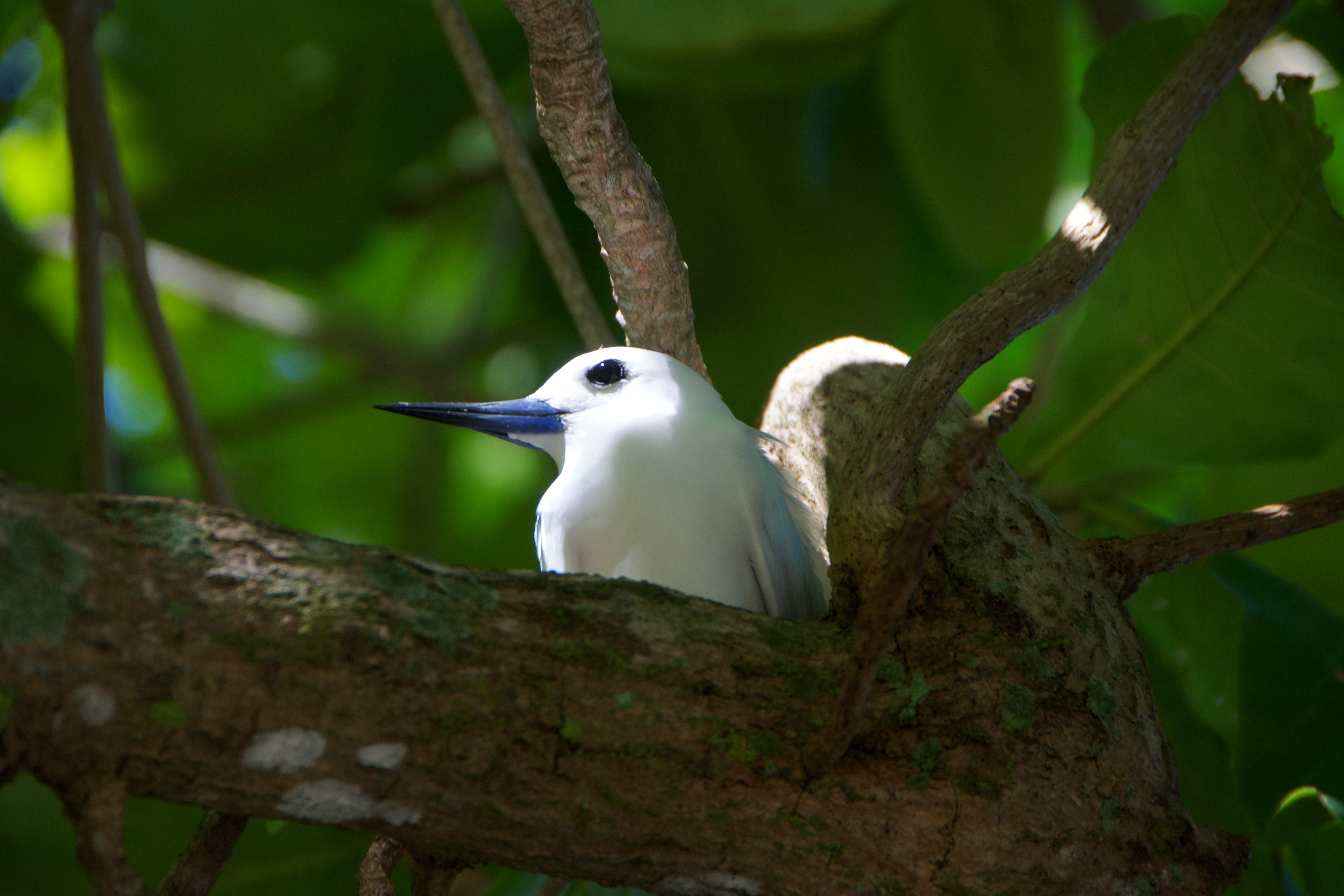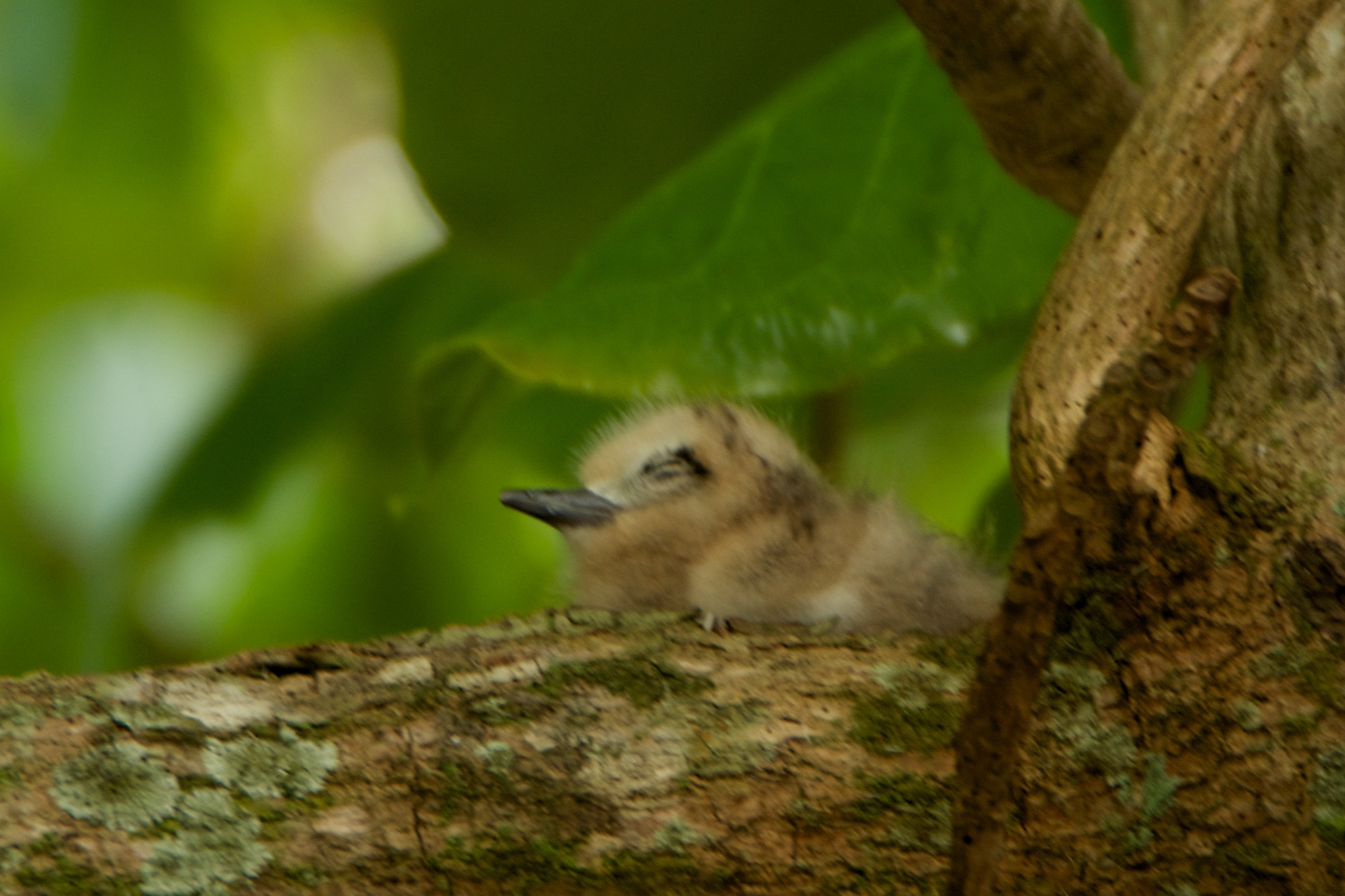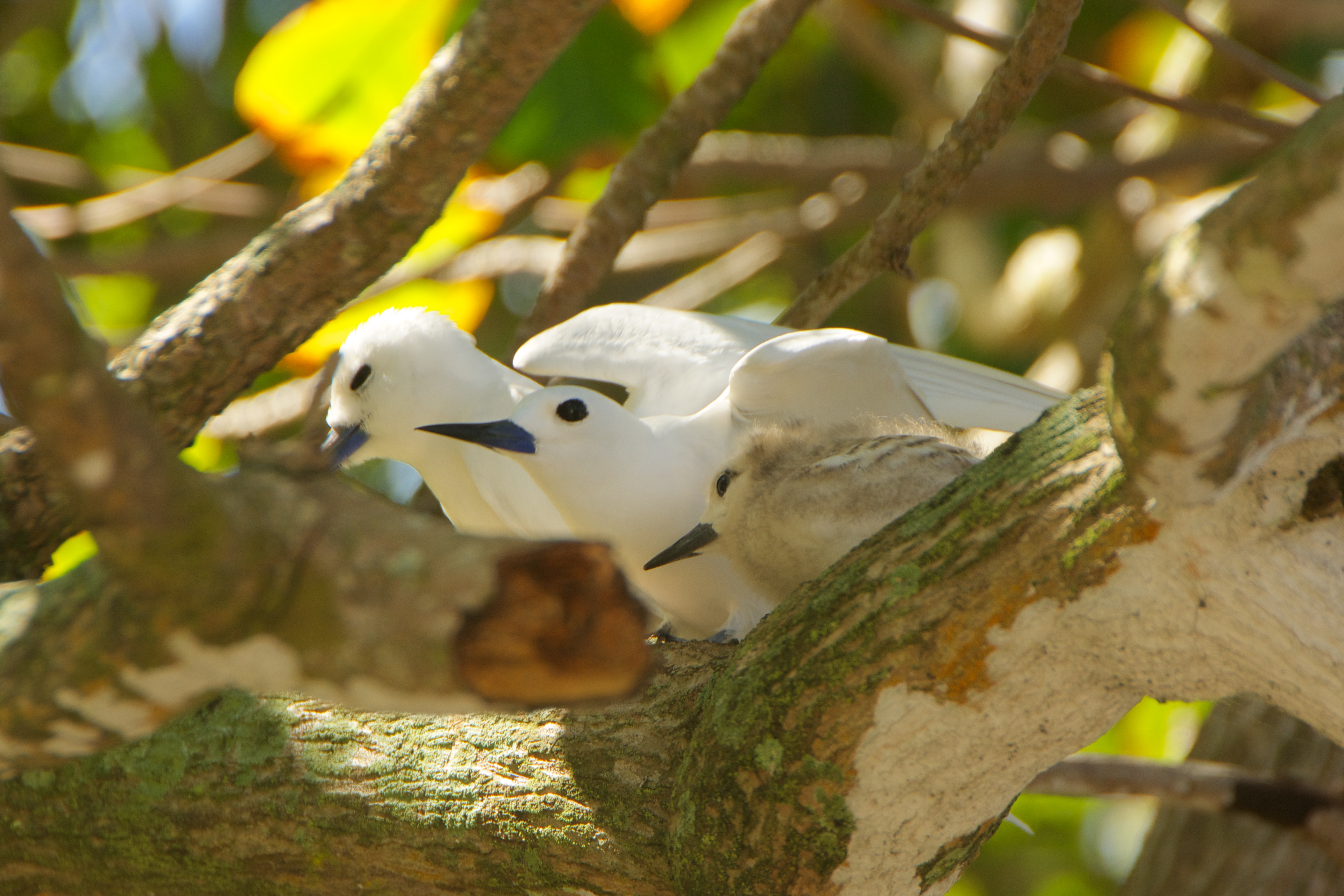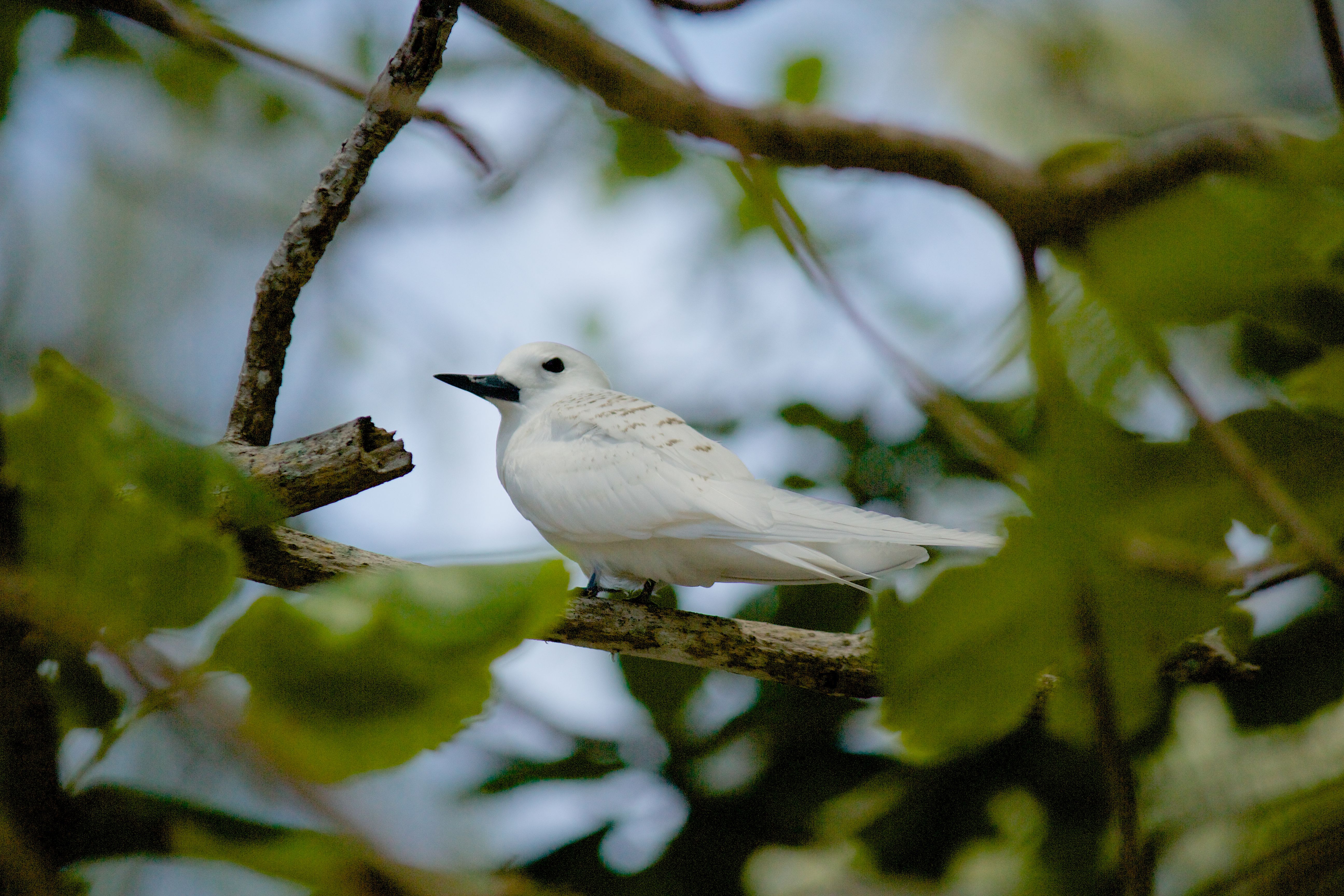A new fairy tern on D’Arros Island
Words by Chris Boyes
On 23 December 2014 we noticed an adult fairy tern Gygis alba (also known as white tern) sitting for an unusually long time on a branch of the badamier tree Terminalia catappa outside the D’Arros Research Centre. At the time we thought there must be something wrong with it.

The ‘sick’ fairy tern sitting tight on its branch in the badamier tree. Notice the beautiful midnight blue base to its bill.
We were beginning to think that the bird hadn’t moved for far too long and it became part of my daily routine to check on it on my way into the lab. On the morning of 17 January we arrived at the centre to find a newly hatched fairy tern chick where the ‘sick’ fairy tern had been!

The ‘sick’ fairy tern sitting tight on its branch in the badamier tree. Notice the beautiful midnight blue base to its bill.
The incubating bird will sit tight for the entire incubation period to prevent the egg from falling. If it is disturbed and has to leave, the egg is extremely vulnerable to predators such as the Seychelles fody Foudia sechellarum, which will push the egg off the branch to break it and fly down to eat the contents. As soon as the chick has hatched, the parent leaves to start the tireless search for food to sustain its offspring’s rapid growth. Fairy terns feed by scooping small fish off the ocean surface and have the incredible ability to catch and hold up to six fish at a time! They transport these fish back to feed their chick. It is rare to see both, or even one, of the parents with the chick during the day. Instead, the chick sits quietly on the branch it hatched on, alone and unnoticed.
Fairy tern chicks are known to remain on the ‘nest’ for 50 to 60 days before they are ready to start foraging with their parents. By 27 March this little chick had been in the tree outside the centre for 68 days already, so we should be seeing it leave soon. This will mark the end of the successful incubation and fledging of a new fairy tern on D’Arros Island.


